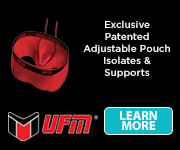Horse And Rider Safety
There is no beating around the bush - horse riding is a risky sport. Apart from the obvious dangers of falling off when mounted, these large animals have always got to be treated with respect when handling them on the ground and in the stable.
Riding need not be any more dangerous than any other risky sport, as long as certain precautions such as those listed on this page are followed. Horse Rider Safety should always be borne in mind when riding or near horses.
Safety for Visitors on the Yard
Horses are large prey animals designed through evolution to protect themselves from things they do not understand! Anyone standing behind them is in danger of being kicked. Horse characters can vary greatly - some can bite (either if they are in a bad mood or if they genuinely believe the hand reaching out to stroke their nose is a carrot!) Visitors to a Riding Stables or Livery Yard, especially with young children, are asked to remember this and keep their children under control at all times! Riding stables are not playgrounds; children running round corners unexpectedly can cause a horse to rear.
Riding Hats
Riding hats or helmets MUST be worn at all times when riding and are paramount to horse rider safety. They are also advised to be worn at other times when handling horses. Riding hats come in various designs - some suit one shape of the head better than another, and of course, some methods are more appropriate to your favored riding discipline.
The most important thing about a riding hat is that it much be fitted correctly ideally by someone attending a hat fitting course. It must also conform to standards PAS 015 or EN 1384. Caps cannot prevent serious injury in all circumstances but help in most cases. Your skull is fragile - it is not worth taking a risk with.
It MUST be replaced if the hat suffers a severe impact due to a fall or a drop onto a hard surface. Riding hat prices start from around the mid £30s, and you can spend up to over £100.
Hats do not last forever as the protective padding gradually compresses with use, and the cap becomes looser on your head. You should purchase a replacement hat as soon as this happens.
Riding Hats and the Law
It is a legal requirement that children under 14 MUST wear a riding hat that conforms to the appropriate standard when riding a horse on the road.
Body Protectors
Horse rider safety can be helped by a body protector, which can give protection to the chest and back area if you fall from your horse. These are particularly useful if you fall onto a hard surface (such as a jump) or if your horse stands on you after a fall. Body protectors can help prevent serious injury.
There are three protection standards, and each has a different colored label in the shops to identify the level of protection offered.
Level 1 Black label
Protectors provide a lower level of protection that is only considered
appropriate for licensed jockeys.
Level 2 Brown label
Protectors provide a lower than average level of protection that is only
considered appropriate for low-risk situations. These DO NOT include riding on roads or other hard surfaces, riding over jumps, riding young or excitable horses, or riding while still inexperienced.
Level 3 Purple label
Protectors provide a level of protection considered appropriate for noeverydayorse riding, competitions, and working with horses. Protectors to this level should:
Prevent minor bruising that would have produced stiffness and pain.
Reduce significant soft tissue injuries to the level of bruising.
Prevent a limited number of rib fractures.
When first using a body protector, it will feel extraordinary and restrictive. Most protectors mold your body's shape and do so more quickly in warm weather than in the cold. Although the body protector initially feels uncomfortable, you must persevere wearing it. After a few times of wearing it when riding, you will find you feel naked without it, and it will become second nature to put it on and use it every time you ride.
Body protectors cost £60 up - a good investment for something that may save your life!
Body Protector Fit
Fitting is paramount, and a visit to an adequately trained retailer is recommended, for example, anyone displaying the BETA Safety course attendance certificate.
Ensure that you are wearing the correct size of body protector and that it is adjusted to give a close fit to the body, and that no RED VELCRO is exposed at the shoulder or waist closures. If RED VELCRO is visible, the protector is too small or is incorrectly fastened.
The body protector should be tried on over light clothing. Check that it is comfortable to wear in all simulated riding positions. The garment should fit securely and reasonably tightly to avoid movement during activity and to ensure that it is in place in the event of an accident.
Footwear
It would help if you rode inappropriate footwear. Serious injuries can be caused if you fall off and your foot gets stuck in the stirrup. Proper riding boots are recommended - these have a heel to stop your feet from sliding through the stirrups. Boots can be short (jophur boots) or full length. The most comfortable footwear is often short boots and half chaps - chaps keep the stirrup leathers from chaffing and bruising your legs. However, what you choose to wear is a personal choice and how much you can afford (long leather riding boots can set you back around $100 up).
Riding in trainers is inappropriate as they have no heels and can be dangerous.
Safe Tack
You are now equipped with a riding hat, body protector, and proper footwear. Now it is time to turn to your horse!
The object of riding and horse rider safety is to stay on top of your horse - your riding apparel may help protect you if you fall off, but you want to avoid doing this at all costs! You do not want to part company with your horse due to faulty tack!
Tack needs to be checked regularly so you can spot a problem before it occurs.
Leather tack needs to be kept clean and well conditioned, so it remains supple - stitching needs to be checked to ensure there are no weak points of weakness. Buying quality tack in the first place is essential. You may find bridles costing little more than £20 and wonder why you should pay over £100 for a similar item. However, the more expensive harness will undoubtedly be made of better leather and, with reasonable care, will last you longer and be more reliable. The last thing you would want is for your reins to break when your horse is in mid-gallop!
Tack can be repaired, but don't skimp here. If it is in bad condition, replace it! If your girth breaks, you will fall off your horse and may suffer serious injury - is it worth risking it?
Buy the right tack for your riding discipline. Also, make sure the approach fits your horse correctly for the comfort of both of you.
Finally, it is good to develop a relationship with your tack supplier - for example, having the person who provides your saddle come out and check the fit regularly. They will be able to advise you on things that you may have missed.
Visibility on the Road
Wearing hi-viz protective clothing when riding on the road can make you more visible to a car driver approximately 3 seconds earlier than would otherwise be the case. These seconds could be vital in saving your and your horse's lives.
It is not always in poor or dark conditions that hi-viz equipment is necessary - on a bright summer's day, the driver's vision may be hampered by bright sunlight!
Slogans on tabards, such as 'Pass wide and slow,' also help remind drivers of the need to take care when passing horses. Unfortunately, too many drivers nowadays seem unaware that horses cannot be depended upon in the same way as bicycles and often come far too close and fast.
Equestrian Road safety also includes thanking drivers who show consideration for horses and their riders, encouraging them to be as thoughtful in the future. Sometimes riders do not help themselves if they ignore courteous behavior! A simple 'thank you can go a long way - so remember every time!
At any time in your horse riding career, you may part company with your mount when you least expect it (or less politely get dumped!). Being prepared can help you get back into the saddle as quickly as possible, with little or no severe damage!
Horses weigh half a ton or more - they must be respected!
About the Author: Earnest Sherrill
Earnest Sherrill is a passionate outdoor enthusiast and writer who resides in the warm and breezy state of Texas. With a deep love for nature, Earnest enjoys exploring the great outdoors and sharing his experiences through his writing. He writes about various aspects of outdoor life and the intriguing happenings of everyday experiences. When not writing, Earnest cherishes spending time with his youngest grandchildren, who bring vibrant energy and robust attitudes to his life. Stay connected with Earnest to discover more about the wonders of the outdoors and the joys of life's adventures.
Other Projects
Subscribe
Subscribing will enable you to get regular notifications about new postings...

Refer a friend and earn $10 at Atlanta Cutlery Corp.



